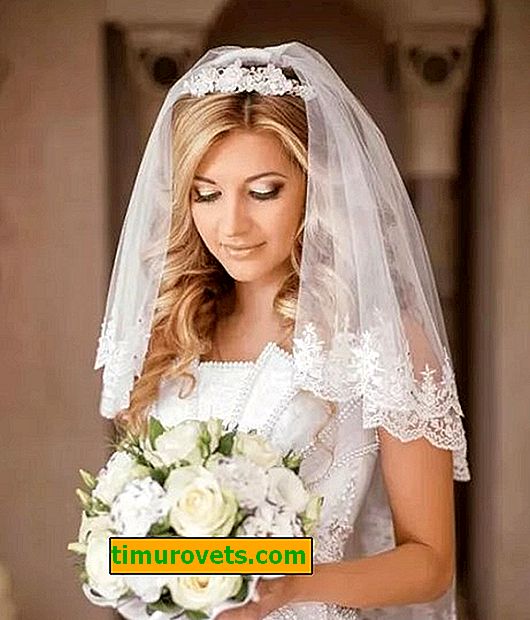Want to buy clothes - light, comfortable, in which the body would breathe? Yes, but you don’t know which fabric meets these criteria? Then we will tell you - this is a kulirka!
Knitwear knitwear: what kind of fabric

Cool knitwear is the best option for summer.
Knitted fabric cooler: description and material properties
Kulirka - cross-knit 100% cotton knitwear. Very smooth and thin. The main structural element is a straight loop. The front side of the canvas is smooth, consists of a number of vertically arranged thin braids. The drawing on the inside resembles a brickwork.
Easy to dissolve in any direction. It stretches perfectly in width, retains its shape for a long time.
If the basis is 100% cotton, the fabric is characterized by: softness, excellent hygienic qualities, antistatic, breathability, lightness.
When synthetics are added, the indicated properties will be added: increased elasticity, wear resistance, elasticity and extensibility.
Characteristic differences knitted cooler

Fabric structure
The basis of the cooler is 100% cotton. It is possible to add synthetic and natural fibers:
- Polyurethane. Increases the durability of the canvas, contributes to the long-term preservation of the color gamut.
- Polyester - the fabric shrinks less after washing, increases wear resistance.
- Lycra - get a stretch-cooler with a high degree of elasticity and extensibility.
- Wool - odors disappear from the fabric faster, heat is better retained.
- Silk-cooler will be softer and more pleasant to the body.
Where is the material produced
Culinary knitwear is produced on knitting equipment - special knitting machines or on knitting machines. Common to both options - the quality of the finished fabric depends on the number of needles involved in the weaving of the threads. The more of them, the thinner the canvas.
Pros and cons of knitted cooler
Knitted cooler has its pros and cons. The pluses include:

- easy care;
- comfort;
- hardly wrinkles;
- excellent breathability;
- high wear resistance;
- naturalness;
- practicality.
The main disadvantage of knitwear is its shrinkage after washing.
Custom qualities and decorative properties of fabric
Due to the cotton and the special weaving of threads , such custom qualities are inherent in the cooler :
- comfort;
- excellent breathability;
- high degree of stretching;
- hypoallergenicity;
- practically does not crumple;
- keeps fit perfectly.
The main decorative property is great for decoration with coloring, embroidery and photo printing.
Varieties of Knitwear
Depending on the type and length of the original fiber, 3 varieties of cooler are distinguished:

- Carde - at the heart of a thread up to 35 mm long. It has a lower level of wear resistance and strength than singing; it keeps its shape worse.
- Openend - at the heart of a thread up to 27 mm long. Differs in high cremability, low wear resistance. Badly holds a form.
Depending on the density of the canvas
The area of its application depends on how dense the fabric has turned out. If the fabric is thin - it is suitable for sewing underwear. Thicker - will find its application when sewing outerwear.
By type of staining
Important! Melange smoothness, culinary smoothness and smoothly painted canvas - types of cooler. The main difference is the way of staining.
Melange surface - for the manufacture of multi-colored, but matching the tone of the thread.
Culinary smooth surface - the fabric is stained by the traditional method (monophonic or in different colors).
Smoothly painted fabric - knit from the threads of one color.
How is knitted cooler made: process features

Material Applications
Cool knitwear is great for:
- Tailoring of adult and children's clothing.
- Making crafts.
- Sewing soft knitted dolls and other toys.
Comparison with similar knit fabrics
There are knitted materials similar to kulirk:
- Interlock is a double-sided fabric. Warmer and denser, less prone to stretching and blooming. Suitable for making things for the cold season.
- The footer is smooth on the front side, the pattern is similar to a kulirk, on the wrong side - a soft fleece. Dense, warm, soft and pleasant to the touch. Optimal for the cold season.
- Ribana is an elastic fabric with a pinstriped pattern. Keeps shape, durable and practical. Suitable for sewing things for newborns.
Recommendations for the care of knitwear items

- Wash by hand or using the delicate wash mode, water 30–40 °.
- Use washing gels.
- In the fight against stains, use laundry soap.
- Press manually without twisting, or use spin at low speeds.
- Stuff things to dry over a towel.
- Dry away from sunlight.
- Iron from the inside out.
- Store on a shelf or on a hanger.
Kulirka is a practical and low-maintenance fabric. If you take note of the above recommendations, you can significantly increase the service life of products from knitwear.










